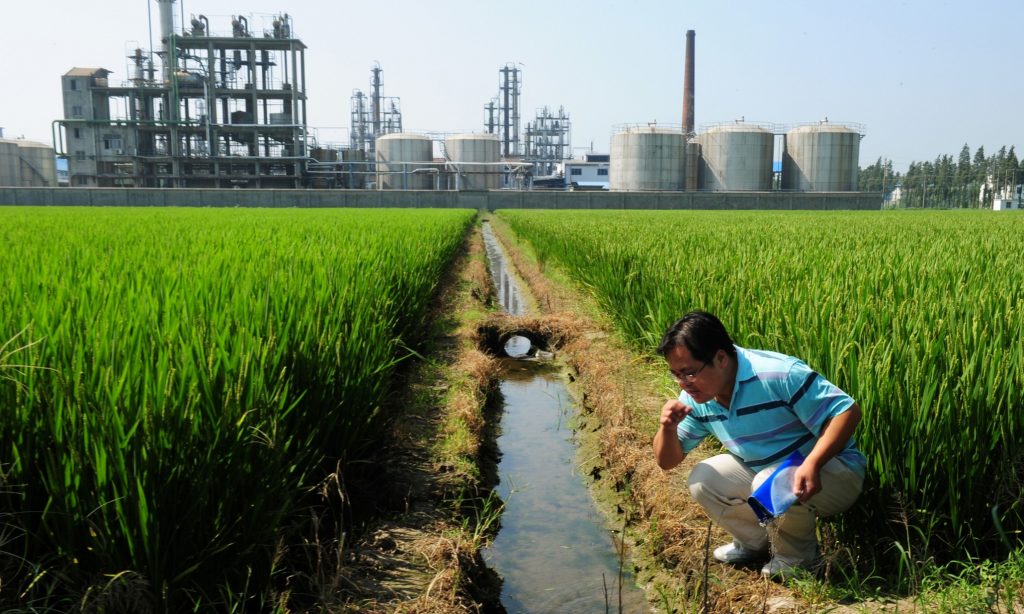
China unveils new action plan to tackle soil pollution
China has released an ambitious plan to curb its worsening soil pollution. The objective is to make 90 per cent of China’s polluted land “safely usable” by 2020, and to stabilise and improve soil quality by 2030. This is to address a long-standing problem which has implications also on food security and public health.
In 2015, the Minister of Environmental Protection said 16 percent of the country’s land exceeded national pollution limits. According to a survey published in 2014, contaminants were discovered in 19.4 percent of surveyed farmland, 10 percent of forests and 10.4 percent of grassland.
According to different estimations, the costs to clean up the contaminated land and make them fit for crops or livestock could reach the equivalent of €700-900 billion. Treatment costs are high and have so far been covered almost solely by local governments. In fact, China has not been able to attract private funds in the sector, since there is no natural profit for getting involved. After decades of unregulated metal smelting, mining and fertiliser manufacturing, the government will have to pay quite an expensive bill to tackle soil pollution.
After the first two national action plans to curb pollution focused on air (2013) and water (2015), this third plan released by Chinese government is the first one targeting soil deterioration. The action plan was published by the central government on Tuesday and involves the establishment of a special fund to tackle the problem, alongside a separate fund to boost technology and equipment upgrade in the sector of heavy metal contamination. This will be accompanied by the elimination of outdated heavy metal capacity.
 The 13th Five Year Plan published last March already contained some guidelines and gave priority to agricultural soil clean-up. More specifically, it focused on soil pollution monitoring systems and the introduction of new clean-up technologies. Also, the government promised to introduce new legislation on the matter next year. Treatment costs are high and have so far been covered almost solely by local governments. In fact, China has not been able to attract private funds in the sector, since there is no natural profit for getting involved.
The 13th Five Year Plan published last March already contained some guidelines and gave priority to agricultural soil clean-up. More specifically, it focused on soil pollution monitoring systems and the introduction of new clean-up technologies. Also, the government promised to introduce new legislation on the matter next year. Treatment costs are high and have so far been covered almost solely by local governments. In fact, China has not been able to attract private funds in the sector, since there is no natural profit for getting involved.
There is no agreement among Chinese experts on what would be the best approach to tackle soil pollution. Different options range from the cheap method of simply not growing edible crops on polluted land, to other implying intensive digging, burning and disposal of contaminated soils from toxic urban industrial sites. The general concern is that taking a wrong approach or choosing shortcuts would worsen the already serious situation.
Wang Xiahui, Director of the Soil Environment Protection Centre of the Chinese Academy for Environmental Protection – a high-level think tank working under the Ministry – underlined that the hard battle of China against soil pollution has been exacerbated by lack of basic data and loose supervision. Moreover, “unlike the often visible pollution of the air or water-obvious smog or dirty streams, for example-soil pollution may not be easily detected without professional tests,” Wang said. Also, soil pollution is hard to reverse, as contaminants last longer than those in air and water. This is why the new action plan includes better provisions for disclosing data on soil quality, including a national online platform. It also calls for greater penalties for polluters and for mishandling of dangerous chemicals.
Ground pollution is a sensitive topic in China, with regard to those villages and neighbourhoods built in proximity of polluted areas. Local government often avoid pointing out the presence of toxic sites for fear of compensation claims. A case which hit the headlines earlier this year is the one of a school in Changzhou: after numerous students reported nausea and nosebleed, the media revealed that the school’s new campus was built next to an abandoned pesticides factory.




